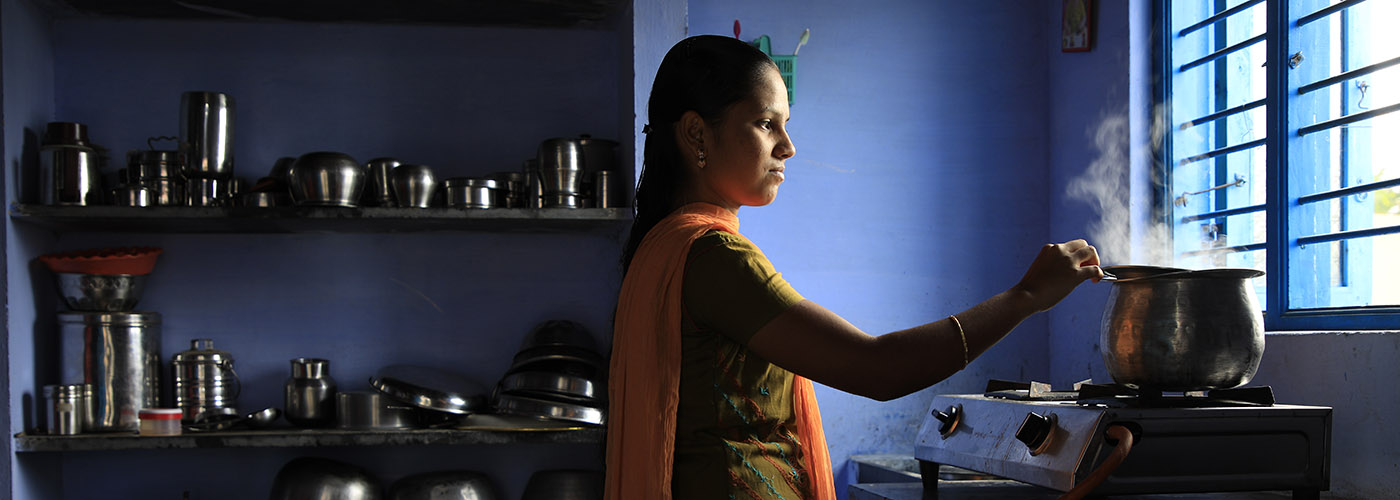Gender and fossil fuel subsidy reform
Attempts to alleviate poverty and achieve universal energy access have often taken the form of fuel subsidies, which are usually focused on specific types of fossil fuels rather than on outcomes. In general, fossil fuel subsidies are ineffective in combating climate change and reducing the harmful side effects of traditional energy.
This research project looks at how existing kerosene and liquefied petroleum gas (LPG) subsidies affect the welfare, productivity and empowerment of women in low-income households in Bangladesh, India and Nigeria.
The study found that LPG and kerosene subsidies are not working for the poorest households, particularly poor women. Better targeting of support for energy access is needed and possible.
- Subsidies disproportionately benefit the wealthier sectors of society. Since the wealthier segments of the population have better access to energy and tend to consume more, they end up using a larger share of energy subsidies.
- Subsidies do not guarantee lower fuel prices—and may even create price premiums. Even in systems with official registered prices, households were found to be paying significantly more than the regulated price. In Nigeria, low-income women reported paying between two to six times more than the official price for kerosene. This is likely due to many factors, including challenges in distribution systems, fuel scarcity, smuggling, diversion and governance issues.
- Scarcity leads to long queuing for fuels. Fuel shortages lead to long lines, and the longer the fuel collection process becomes, the more likely that it will fall on women. Additionally, where home delivery is not available, fuel gathering often comes at the expense of daily earnings.
Subsidies alone are not effective at promoting the transition to cleaner cooking or lighting fuels, especially where ‘freely’ collected biomass is available. That being said, any reforms made to the subsidies system need to be undertaken with care, as price increases to subsidised fuels without any support measures could hurt poor women, especially where they are using subsidised cooking fuels.
With improved targeting and changes in focus, subsidies can still be an effective method of making more energy more accessible.
- Effective subsidies have to be highly targeted. Many higher-income households report the ability to absorb price increases which implies there is still scope for better targeting. Targeting subsidies to those that need them most can counteract some of the problems outlined above.
- A focus on connection over consumption subsidies can encourage gender empowerment. Connection subsidies could help enable women to make decisions like purchasing new cooking equipment by overcoming upfront connection costs. It is essential to target these campaigns at all genders, as men are often the people making decisions for families on energy use.
- A gender focus can improve targeting and contribute to empowerment. For example, India’s PMUY scheme can only be used by female beneficiaries. This plays a positive role in encouraging women to pursue financial inclusion and in bolstering their voice and agency on household energy choices.
Improved subsidies need to be introduced with a more holistic plan for clean energy adoption. Research found that switching fuels is not only influenced by fuel affordability and consumption subsidies but also by other factors such as the level of education of women (Nigeria), a focus on upfront costs (India), and potentially who has the decision to make energy choices (mostly men in Bangladesh, mostly women for cooking in India and Nigeria). Subsidies for modern energy must be coupled with education and information so people understand how they can help benefit their health, income, and status, or they risk being unsuccessful.
Recommendations from the report
- Continue to phase out fossil fuel subsidies that do not support energy access for poor women or the target population. In particular, phase out subsidies for kerosene, which is prone to large-scale diversion, is more costly than other lighting alternatives, and is not clean-burning.
- Make subsidies more technology-neutral, to avoid technology lock-in by fostering solutions adapted to the context. This should include not only focusing access policies on transitional fossil fuels but also on ensuring that the right market incentives and structures are in place to cultivate new and renewable lighting and cooking technology.
- Recognise that subsidy reform needs to be undertaken extremely carefully, alongside a robust package of measures to mitigate the negative impacts of price increases.
- Use comprehensive strategies for energy access that recognise the importance of gender and incorporate it into policy design.






Follow us on: